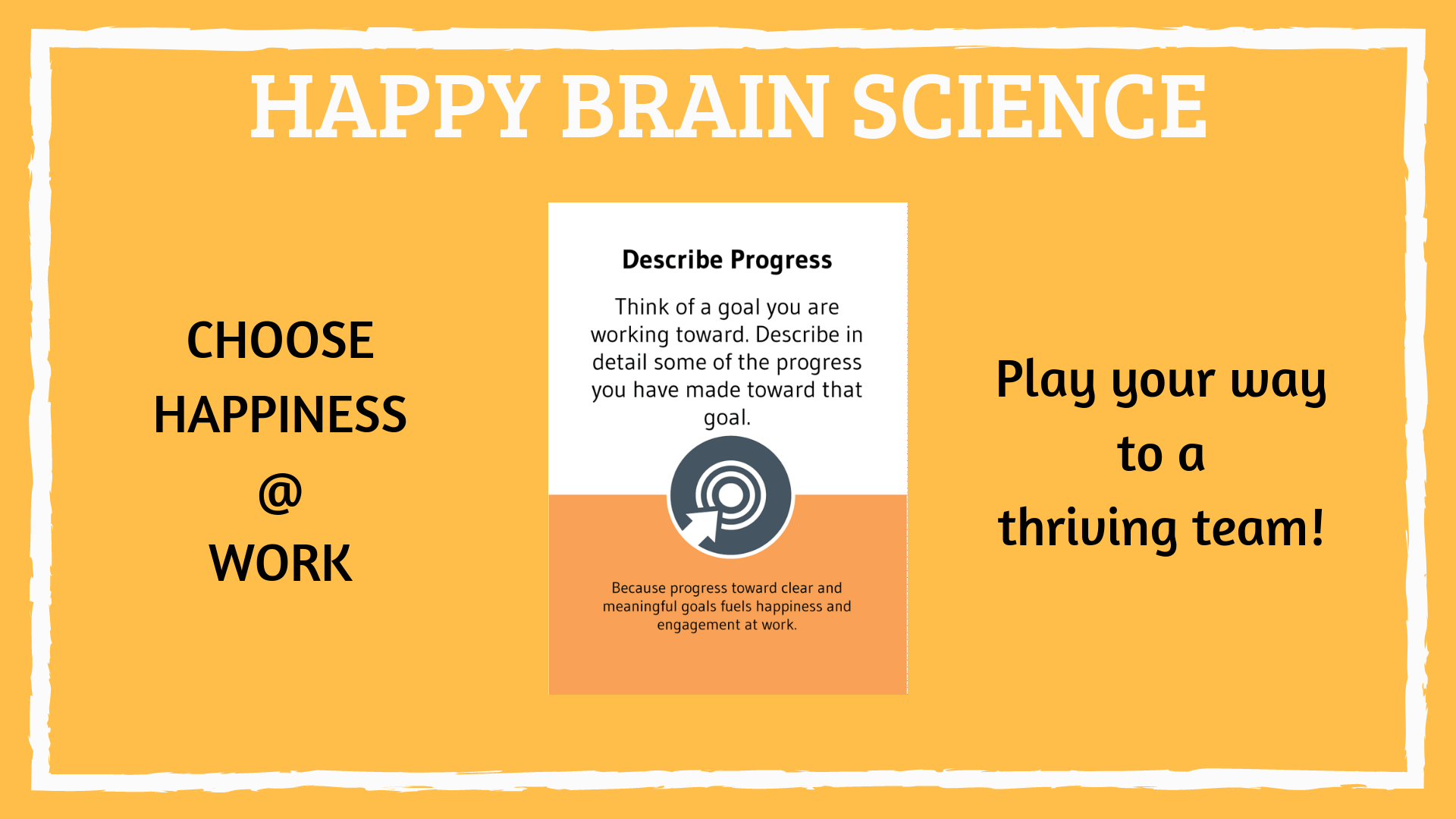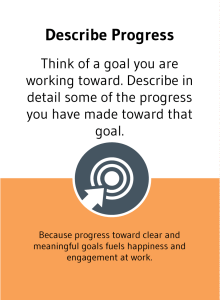
Visualize Progress
 The Story
The Story
Chris and Adam had progressed about 1/4 of the way through their app development project. They were past the exciting beginning of the work and, as a result, they had settled into a routine.
But with the first alpha milestone apparently over a year away, they were losing steam. It felt like so much still had to be done. Their routine was starting to feel like a grind.
Deep into a meeting about project planning and status, Chris saw in Adam what she felt in herself: flagging energy. So Chris made an observation:
“Adam, it seems like you and I are very focused on the work that has not been done yet. That’s natural. Human beings have what scientists call a ‘negativity bias.’ We focus on what’s wrong or not done, more than what is right or completed. But in fact, we’ve made a lot of progress on the app in just a few months. We need to find a way to show and feel that progress.”
The Lightbulb Moment
“That’s a great idea!” Adam said. “We’ve got 208 use cases described for this software. But we’ve implemented 52 of the most important and challenging scenarios. That’s a lot, especially for a new team with a new tech lead in the first few months.”
“How about we use playing cards to show our progress?” Adam suggested. “4 decks of cards have 208 cards total — the same number of use cases we’ve got. What if we buy 4 decks of cards and write a use case on each one? We could put them all up on the bulletin board in the break room. Then we could have a meeting where people turn over the cards that list scenarios that are complete. The whole team – including you and I – will feel our progress more!”
“I love it,” said Chris. “Let’s do it!”
They did, and the progress meeting proved to be a shot in the arm for the team. Each team member stood up and turned over the cards with use cases they had completed. By the end of the meeting, the team had completely turned over one of four decks. Everyone could feel the momentum that the project had.
Because of how well this meeting had gone, they agreed that in the weekly staff meeting, they would identify any new completed use cases and flip those cards, too. Every time anyone walked by the cards, they got a palpable sense of the progress the team was making.
The Science
Research led by Harvard Professor Teresa Amabile shows the power of progress. Making progress toward clear and meaningful goals fuels “quality inner work life,” as she calls it.
When creating indicators of progress, it’s worth noting that more of our brain is devoted to processing visual information than info from any of our other senses. For instance, we remember images better than words. As a result, by visualizing progress, we empower our brain to overcome its negativity bias and focus on the progress that we’ve made.
Apply It
First, measure what matters. Then buy a thermometer, make a chart, or craft a graph, and make progress visible to your colleagues and yourself.
Learn More
This book is a great place to start: The Progress Principle: Using Small Wins to Ignite Joy, Engagement, and Creativity at Work. Teresa Amabile and Steven Kramer, Harvard Business School Publishing, 2011. We reviewed this book here.
For a shorter article on the topic, I recommend this: What Really Motivates Workers. Amabile, Teresa M., and Steve J. Kramer. Harvard Business Review 88, nos. 1/2 (January–February 2010): 44–45. http://www.hbs.edu/faculty/Pages/item.aspx?num=37331
(This post is part of a series about solutions featured in our popular card game & facilitation tool, Choose Happiness @ Work.)